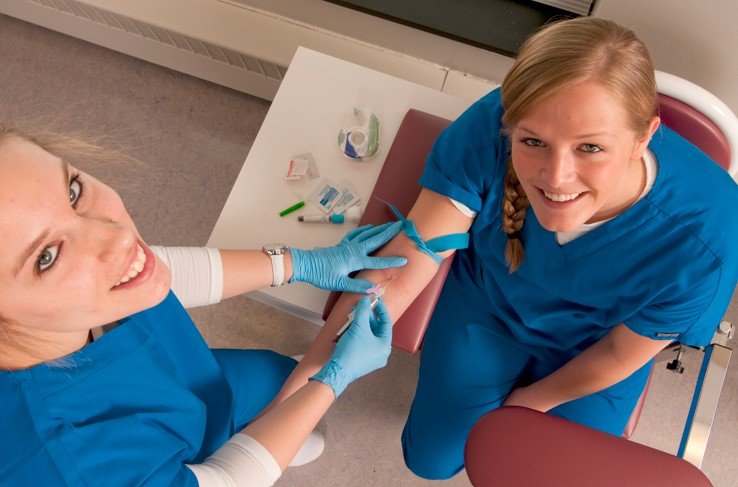Effective Supply and Equipment Management in Hospitals: Navigating Changing Policies
Summary
- Changing policies in the United States have a significant impact on the procurement and distribution of medical supplies and equipment in hospitals.
- Hospitals must adapt to new Regulations, Reimbursement policies, and technology advancements in order to effectively manage their supply chains.
- The evolution of policies can lead to challenges and opportunities for hospitals looking to improve efficiency and patient care through better supply and equipment management.
The Importance of Effective Supply and Equipment Management
Supply and equipment management is a critical aspect of hospital operations, affecting not only patient care but also financial stability. Hospitals rely on a steady supply of medical supplies and equipment to provide high-quality care to patients. Effective management of these resources ensures that hospitals can meet patient needs, maintain regulatory compliance, and control costs.
Challenges in Procurement and Distribution
Procuring and distributing medical supplies and equipment in hospitals can be a complex process, with several challenges to consider:
- Regulatory Compliance: Hospitals must adhere to strict Regulations regarding the procurement and distribution of medical supplies and equipment to ensure patient safety and quality of care.
- Cost Control: Managing costs associated with procurement and distribution is essential for hospitals to maintain financial stability and avoid unnecessary expenses.
- Supply Chain Efficiency: Ensuring a streamlined Supply Chain is crucial for hospitals to have access to necessary supplies and equipment when needed.
- Technology Integration: Leveraging technology to improve procurement and distribution processes can enhance efficiency and reduce errors in managing supplies and equipment.
Impact of Changing Policies
Changing policies at the federal, state, and local levels can have a significant impact on how hospitals procure and distribute medical supplies and equipment. These policies can relate to Reimbursement, Regulations, technology, and other factors that influence hospital operations:
- Regulatory Changes: Updates to Regulations regarding the procurement and distribution of medical supplies and equipment can require hospitals to adapt their processes to remain compliant.
- Reimbursement Policies: Changes in Reimbursement policies can impact how hospitals budget for and purchase medical supplies and equipment.
- Technology Advancements: Policy changes related to technology integration can influence how hospitals manage their supply chains and incorporate new tools for procurement and distribution.
Strategies for Adapting to Changing Policies
To navigate the impact of changing policies on the procurement and distribution of medical supplies and equipment, hospitals can implement several strategies:
Stay Informed
Keeping abreast of policy changes at the federal, state, and local levels is essential for hospitals to anticipate and prepare for shifts in Regulations and Reimbursement policies.
Collaborate with Suppliers
Establishing strong relationships with suppliers can help hospitals negotiate better pricing, secure reliable sources of supplies, and stay informed about industry trends and policy changes.
Invest in Technology
Leveraging technology solutions such as inventory management systems, automated procurement tools, and data analytics can help hospitals improve efficiency in managing their supply chains and adapting to policy changes.
Train Staff
Providing training and education to staff responsible for procurement and distribution can ensure that they are equipped to navigate policy changes and implement best practices in managing medical supplies and equipment.
Conclusion
The procurement and distribution of medical supplies and equipment in hospitals across the United States are significantly impacted by changing policies. Hospitals must be proactive in adapting to new Regulations, Reimbursement policies, and technology advancements to effectively manage their supply chains. By staying informed, collaborating with suppliers, investing in technology, and training staff, hospitals can successfully navigate the challenges and opportunities presented by evolving policies to improve efficiency and patient care.

Disclaimer: The content provided on this blog is for informational purposes only, reflecting the personal opinions and insights of the author(s) on the topics. The information provided should not be used for diagnosing or treating a health problem or disease, and those seeking personal medical advice should consult with a licensed physician. Always seek the advice of your doctor or other qualified health provider regarding a medical condition. Never disregard professional medical advice or delay in seeking it because of something you have read on this website. If you think you may have a medical emergency, call 911 or go to the nearest emergency room immediately. No physician-patient relationship is created by this web site or its use. No contributors to this web site make any representations, express or implied, with respect to the information provided herein or to its use. While we strive to share accurate and up-to-date information, we cannot guarantee the completeness, reliability, or accuracy of the content. The blog may also include links to external websites and resources for the convenience of our readers. Please note that linking to other sites does not imply endorsement of their content, practices, or services by us. Readers should use their discretion and judgment while exploring any external links and resources mentioned on this blog.
